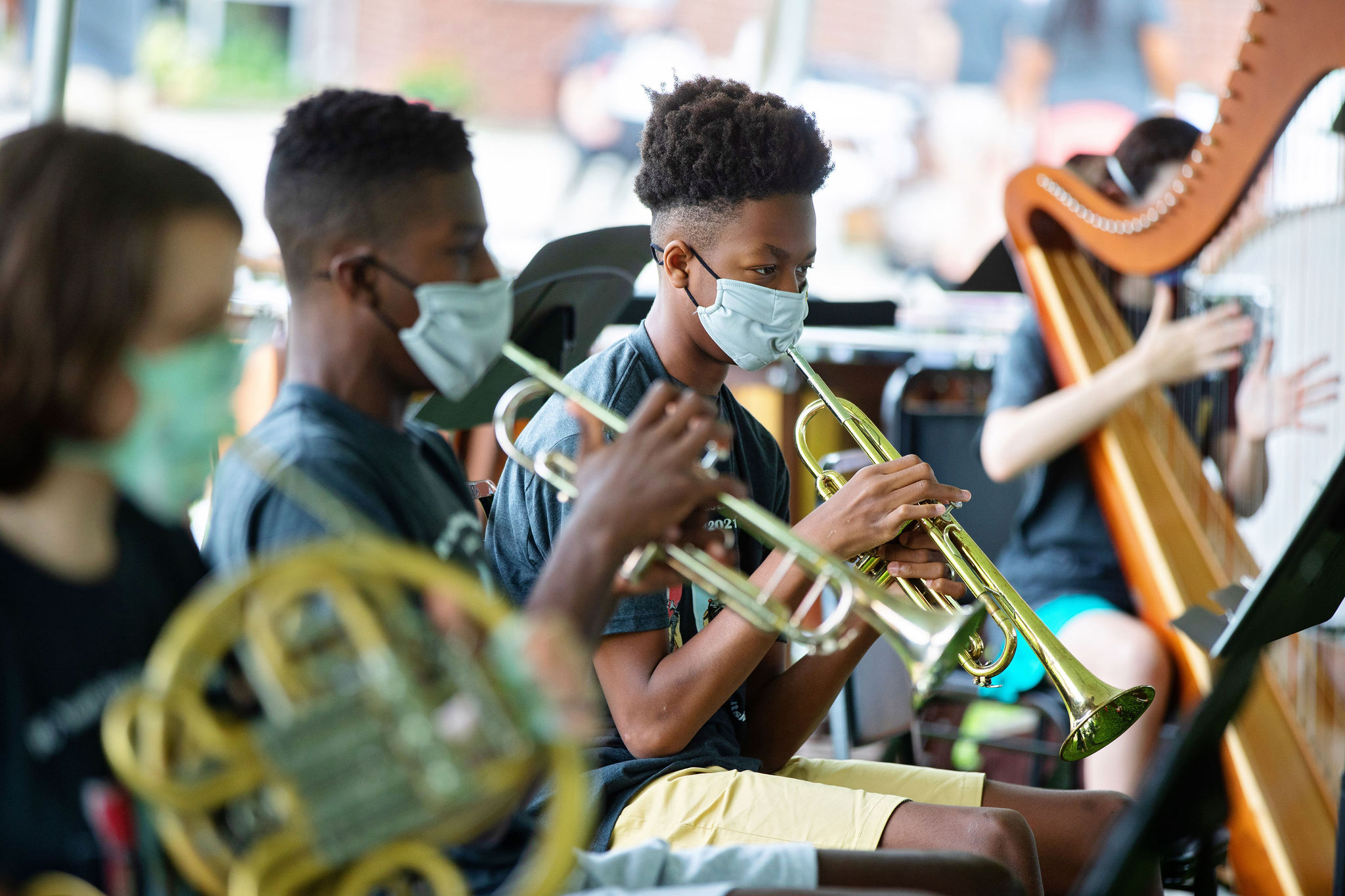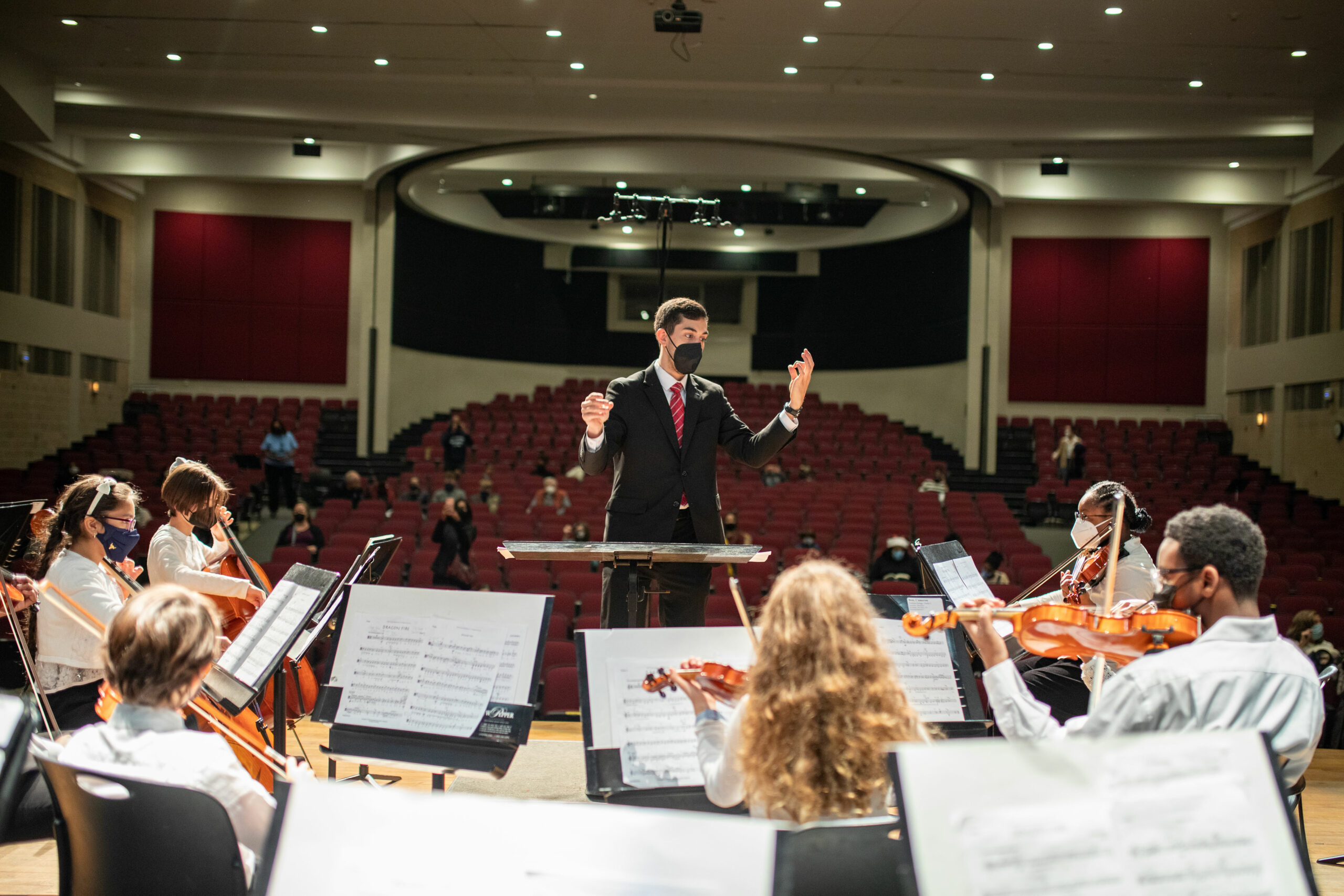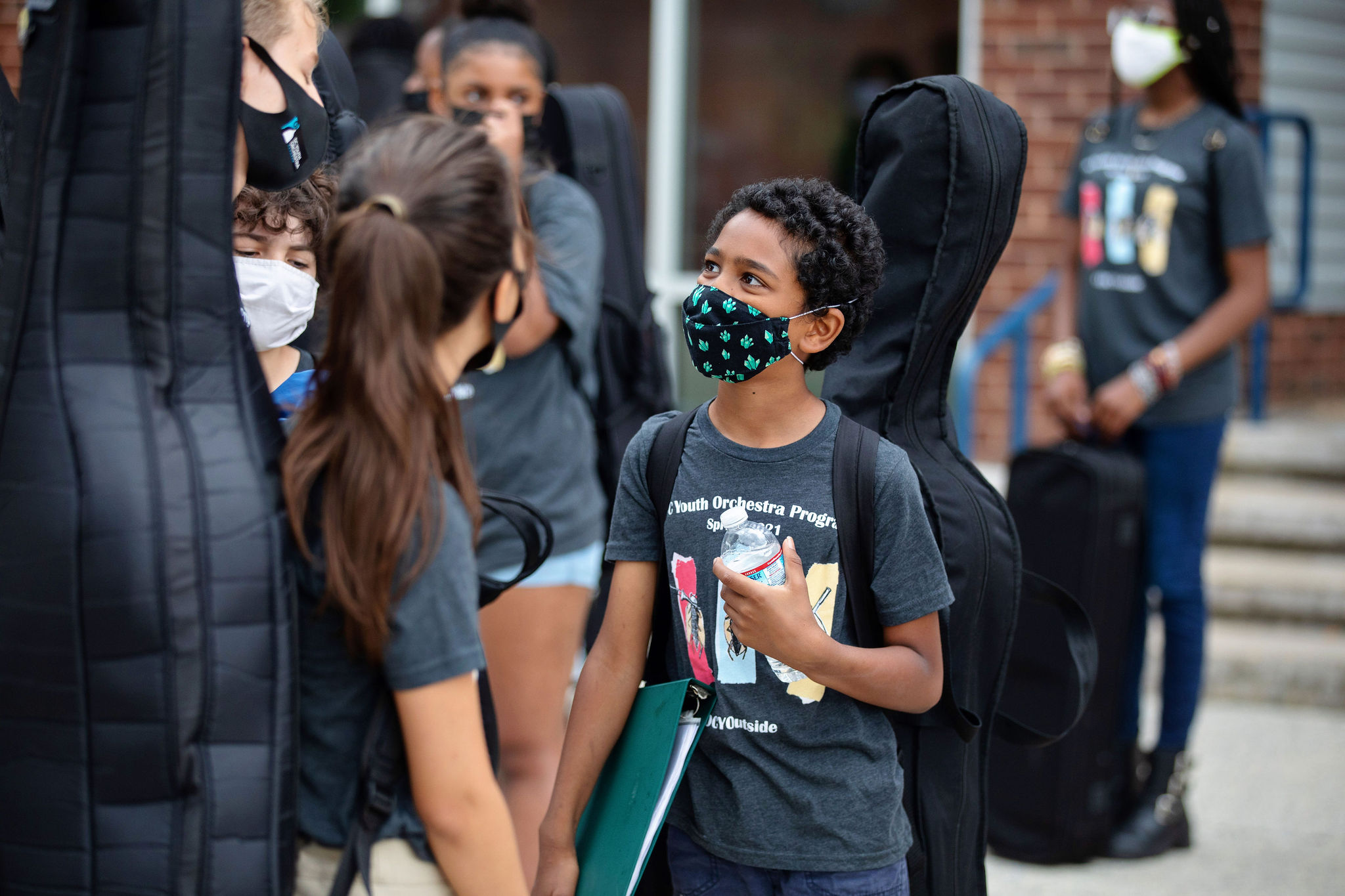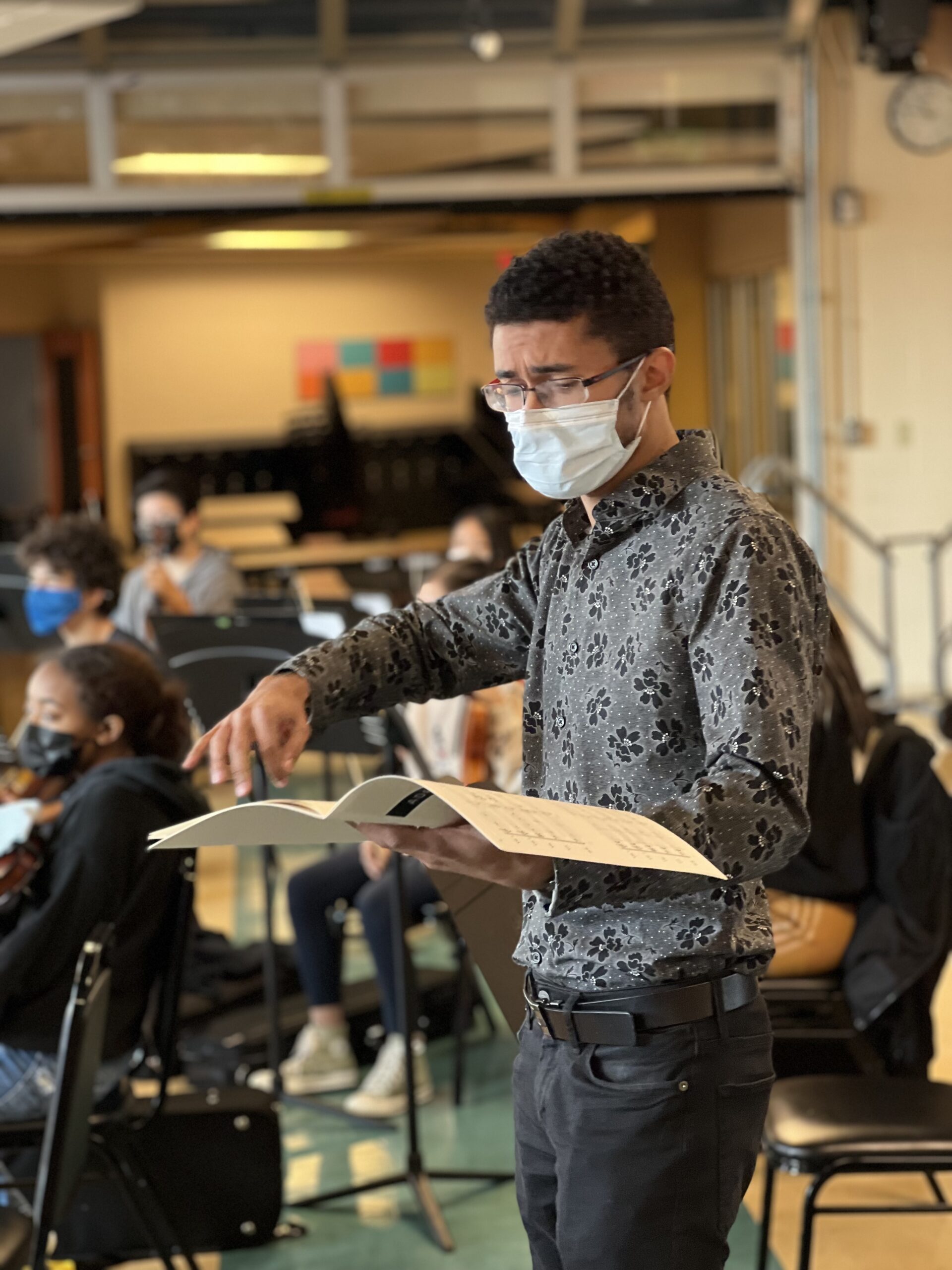By Elizabeth Schurgin, Executive Director

DCYOP and its partners are launching a major new talent development program in 2022 for student-musicians who identify as Black, Indigenous, or People of Color. The initiative provides comprehensive musical support, including scholarships, mentorship, and other unique opportunities, to talented young musicians in their personal musical journeys.
The Washington Musical Pathways Initiative is a partnership of DCYOP, the John F. Kennedy Center for the Performing Arts, the National Symphony Orchestra, and Levine Music, funded with a $2 million grant award from the Andrew W. Mellon Foundation. Together, the partners will champion a collective approach to creating a more diverse and inclusive American orchestral music community in the greater Washington metropolitan region.
For the past 2 ½ years, DCYOP has chaired the Steering Committee that has led the effort to create a shared vision for this program. DCYOP will house the Pathways director, who will oversee the day-to-day operations of the program. DCYOP will take the lead in recruiting students, providing ensemble programming, and developing and implementing an equity-focused vetting process for teachers. Other Pathways programs can be found in Chicago, Philadelphia, Boston and several other cities.
Why was DCYOP selected to be a partner? Because diversity and equity are in DCYOP’s DNA.
When DCYOP was founded in 1960, it was a youth orchestra composed of mostly Black musicians. Not long after the group started, it achieved both national and international recognition for its musical talent. The group was the first youth orchestra to perform at the Kennedy Center, played alongside musical luminaries such as Aaron Copland, and frequently played for presidents and diplomats. While it achieved acclaim as a youth orchestra, it also fostered the musical development of many talented Black musicians. DCYOP is where conductor Michael Morgan got his start, where Toyin Spellman-Diaz spent hours playing the oboe, and where Emmy Award-winning composer John Wineglass played violin for ten years. DCYOP and its students succeeded in spite of the racial inequalities and systemic barriers that were widespread in the orchestral world at the time.
Even today, structural inequities persist: orchestras throughout the country are still overwhelmingly white spaces. In 2016, the League of American Orchestras released a report that showed that Black and Latinx musicians made up 2 percent and 3 percent of professional symphony orchestras.
DCYOP is committed to changing this, embracing diversity across multiple realms. For the past 60 years, DCYOP’s youth have come from diverse backgrounds. Today, 65 percent of our musicians identify as BIPOC, representing 100 different zip codes and a variety of socioeconomic backgrounds. We make it our mission to work with students with different resources and backgrounds, which is why we established our Talent Development Program in 2016. The program provides mentorship, private lessons, and other advanced musical training opportunities for talented youth who cannot afford it. In many ways, Pathways is a turbocharged Talent Development Program.
As with any new opportunity at DCYOP, we analyze and reflect to ensure that it is aligned with our mission and beliefs. It is easy to see how Pathways fits into our mission—to empower young people to transform their lives through music and community. But what really made us commit to pursuing this new initiative was that it also aligns with our core beliefs:
- All young people should have access to the transformative power of music education.
- Excellence is fostered through diversity, inclusion, and community.
- Students are supported in their personal journeys by meeting them where they are.
- Youth orchestras can model change and shape the future of the orchestral music world.
Diversity is the future for the orchestral world and it starts with creating equitable opportunities for young musicians.
More information on the program including eligibility and how to apply will be available in January.



